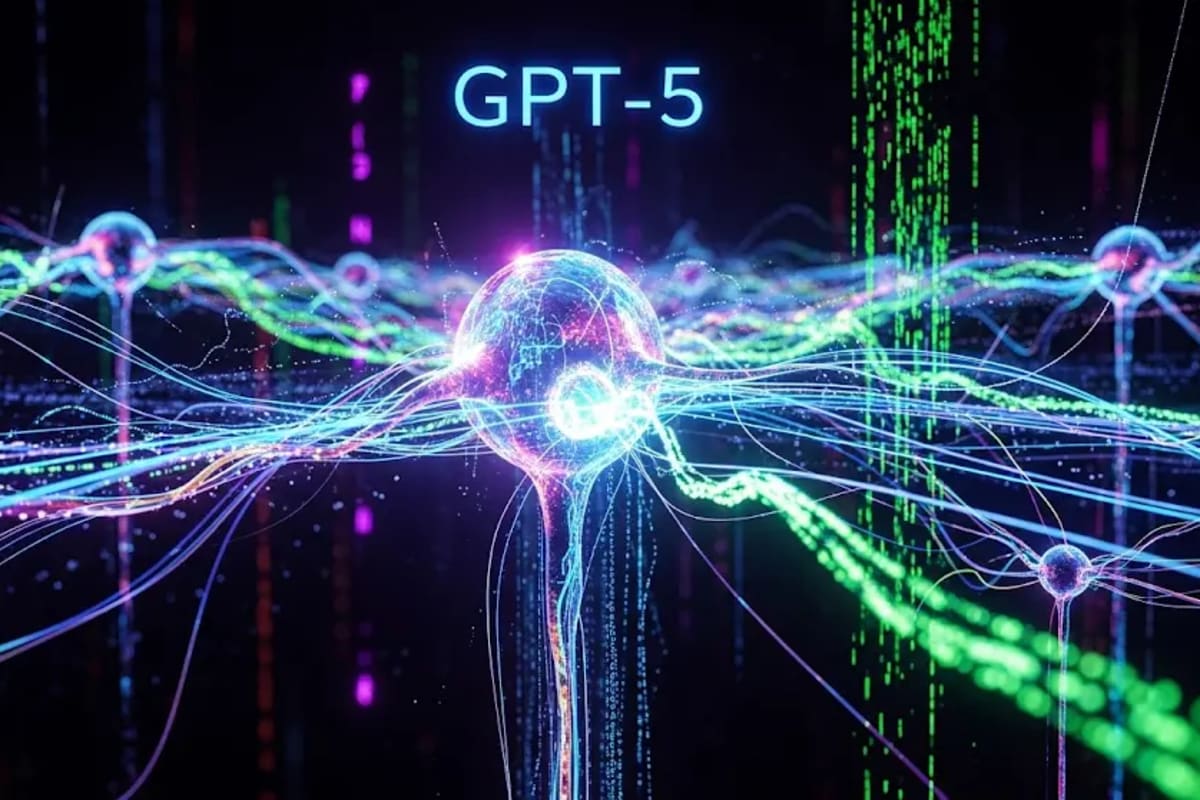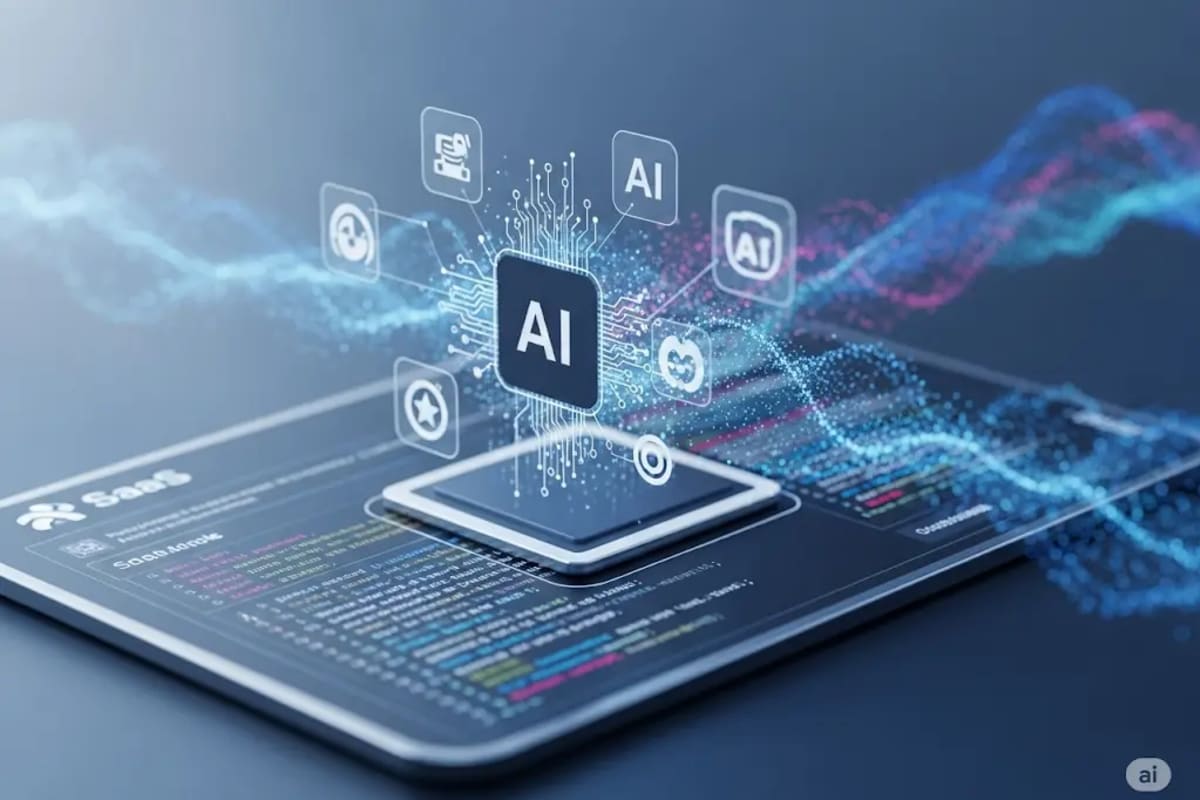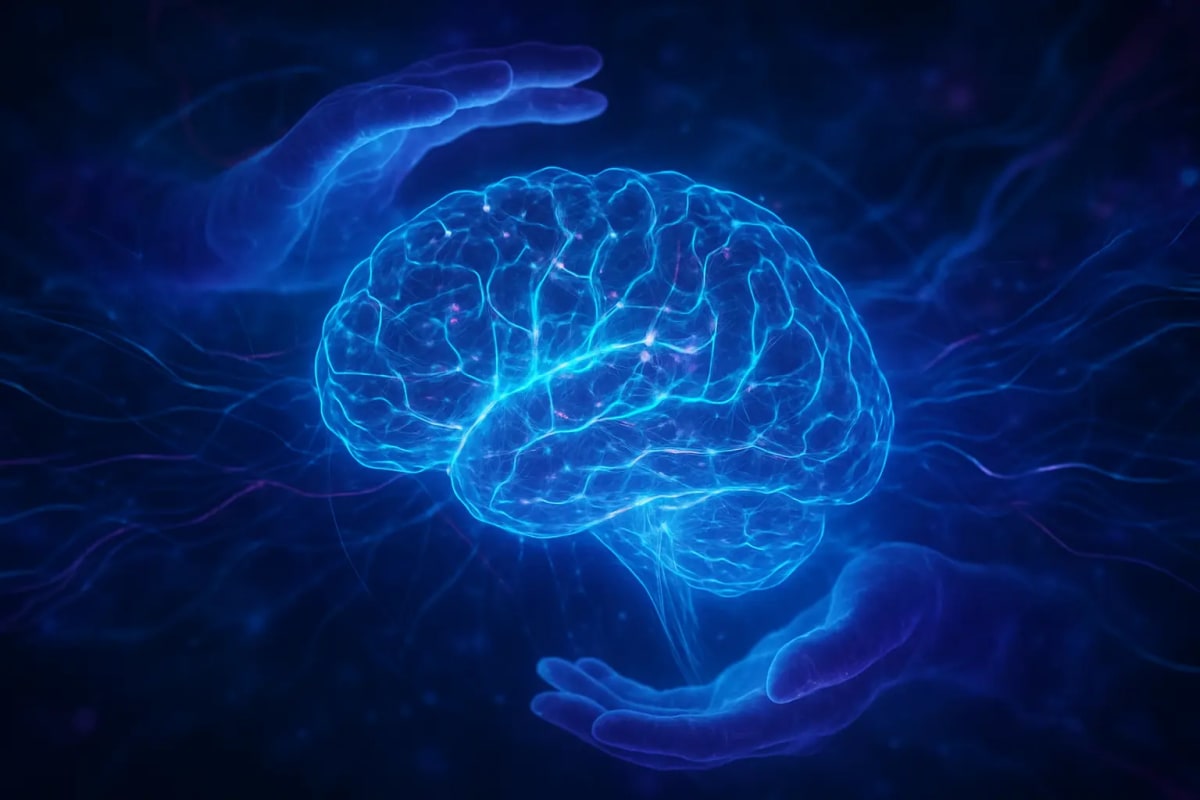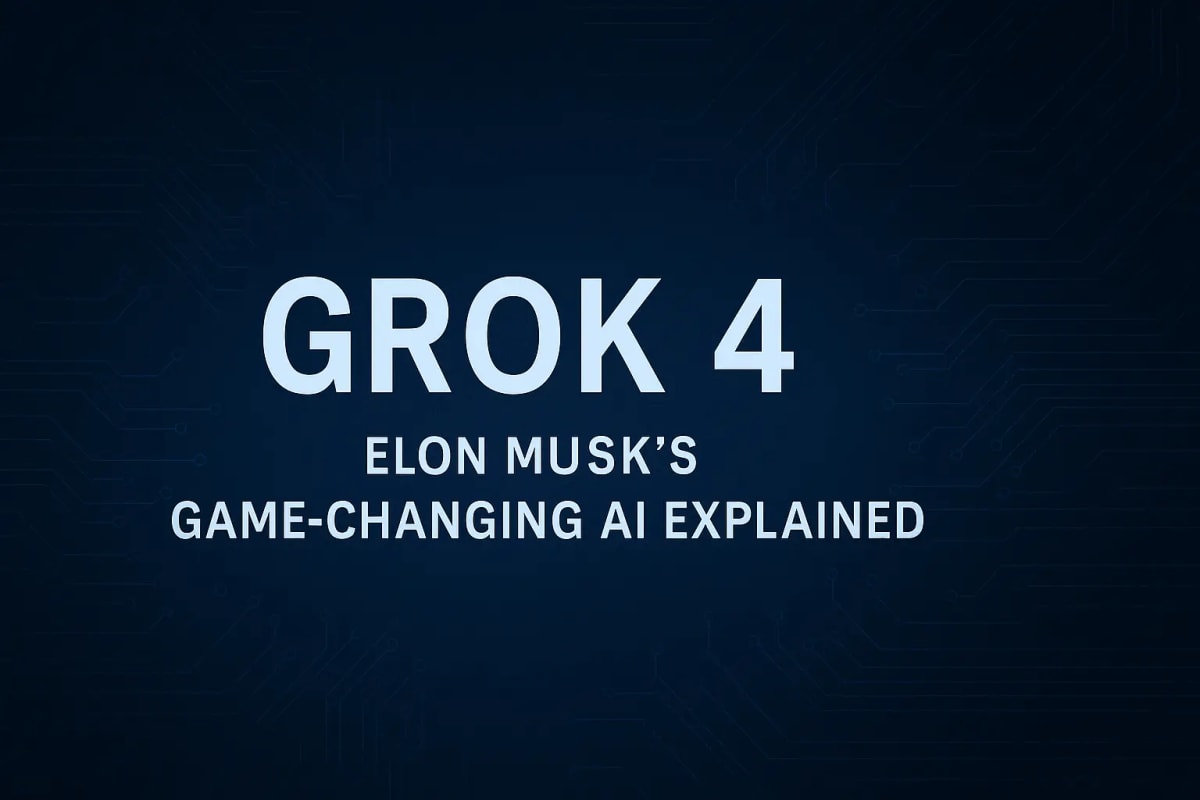
Explore GPT-5 predictions, its expected release, enhanced capabilities, and how it will transform AI, business, education, and beyond.
News and Niche
The world of Artificial Intelligence is moving at an unprecedented pace, and at the forefront of this revolution is OpenAI's Generative Pre-trained Transformer (GPT) series. Each iteration has marked a significant leap, from the foundational GPT-1 to the remarkably versatile GPT-4 and its multimodal successor, GPT-4o. Now, the anticipation for GPT-5 is reaching a fever pitch, with industry insiders and enthusiasts alike speculating on its transformative capabilities. This next generation is poised to redefine our interaction with AI, pushing the boundaries of what's possible and accelerating the journey towards Artificial General Intelligence (AGI).
But what exactly can we expect from GPT-5? Will it be merely an incremental upgrade, or a monumental shift that fundamentally alters industries and daily life? This long-form exploration delves into the most compelling predictions surrounding GPT-5, examining its potential release timeline, anticipated architectural enhancements, a host of new features, and the profound impact it's likely to have across various sectors. We will also critically analyze the ethical considerations that inevitably accompany such powerful technological advancements, ensuring a holistic understanding of this impending AI leap.
The Trajectory of GPT: A Brief History
To truly appreciate the potential of GPT-5, it's essential to look back at the remarkable evolution of its predecessors. OpenAI has consistently pushed the envelope, demonstrating a relentless pursuit of more intelligent, coherent, and capable AI models.
From GPT-1 to GPT-4: A Rapid Evolution
The journey began in 2018 with GPT-1, a foundational model that showcased the power of the transformer architecture for natural language understanding. While a proof-of-concept, it laid the groundwork for future advancements.
A year later, GPT-2 emerged, a significantly larger model with 1.5 billion parameters. It demonstrated impressive text generation capabilities, capable of producing coherent short passages and garnering widespread attention for its fluency.
The real game-changer arrived in 2020 with GPT-3. With 175 billion parameters, GPT-3 was an order of magnitude larger than GPT-2, enabling it to generate much longer and more coherent text, and perform a wide array of tasks with remarkable few-shot learning abilities. Its conversational variant, ChatGPT, revolutionized public perception of AI, rapidly gaining millions of users.
GPT-4, released in 2023, further refined these capabilities. While its parameter count remains undisclosed, it's estimated to be in the trillions. GPT-4 showcased enhanced reasoning, improved factuality, and a reduction in harmful or biased content. Its multimodal capabilities were further expanded with GPT-4o in May 2024, allowing for seamless integration of text, audio, and visual inputs. This progression highlights OpenAI's commitment to scaling up models, expanding their understanding of context, and enhancing their ability to interact in a more human-like manner.
When Will GPT-5 Arrive? Decoding the Release Timeline
The question on everyone's mind is, of course, "When will GPT-5 be released?" While OpenAI has maintained a degree of secrecy surrounding official dates, various clues and statements from key figures like Sam Altman offer insights into the anticipated timeline.
Sam Altman's Hints and Industry Speculation
Sam Altman, CEO of OpenAI, has been a central figure in providing glimpses into the development of GPT-5. As of July 2025, recent statements indicate a release "this summer," following earlier pronouncements of "a few months" in April and "weeks/months" in February. This suggests an imminent launch. However, it's worth noting that OpenAI has, at times, delayed releases for extensive safety tests and reviews, as seen with their open-source model.
Industry experts widely anticipate GPT-5 to debut in mid-to-late 2025. This aligns with OpenAI's historical pattern of releasing major updates approximately every 1-2 years. Early versions have reportedly been demoed to select industry insiders, further fueling speculation of an impending public unveiling. The development of GPT-5 has been confirmed by Altman since late 2023, with the model consistently being on OpenAI's roadmap.
One significant factor influencing the timeline is the immense computational cost and the availability of high-quality training data. Training a model of GPT-5's anticipated scale is projected to cost billions of dollars, and securing diverse, representative datasets is a continuous challenge. OpenAI has been actively investing in generating custom datasets and even synthetic data to address potential data limitations, though this approach carries its own set of risks, such as the potential for feedback loops and "hallucinations."
Anticipated Capabilities: A Leap in Intelligence
The most exciting aspect of GPT-5 lies in its expected capabilities, which are predicted to represent a substantial leap forward across multiple dimensions of AI.
Enhanced Reasoning and Problem-Solving
One of the most significant improvements anticipated for GPT-5 is a dramatic enhancement in its reasoning abilities. While GPT-4 demonstrated impressive logical reasoning, GPT-5 is expected to handle multi-step reasoning tasks with significantly higher accuracy. This means it will be better at:
Complex Logical Chains: Tackling intricate problems that require sequential deduction and analysis.
Mathematical Problem Solving: Performing more accurate and robust calculations, potentially even handling advanced mathematical concepts.
Scientific Research Synthesis: Interpreting and summarizing complex scientific papers, identifying key findings, and drawing novel connections.
Code Debugging and Development: Becoming an even more proficient coding assistant, capable of understanding complex software architectures and suggesting more sophisticated solutions.
This advancement in reasoning will make GPT-5 an invaluable tool for tasks that currently require significant human cognitive effort.
True Multimodality: Beyond Text and Images
While GPT-4o already offers impressive multimodal capabilities, GPT-5 is expected to take this to the next level, achieving true, seamless integration across various data formats. This means the model will not just process, but reason across:
Text: Superior understanding and generation of human language.
Images: More nuanced image interpretation, including object recognition, scene understanding, and even generating images from complex textual descriptions with greater fidelity.
Audio: Advanced speech recognition, natural language understanding of spoken commands, and even realistic voice synthesis that adapts to context and emotion.
Video: The ability to analyze video content, understand narratives, identify actions, and potentially even generate new video segments based on prompts.
Imagine a system that can watch a technical video, understand the demonstrated process, and then generate a detailed textual instruction manual, simultaneously creating illustrative images and even a voice-over explanation. This level of multimodal integration will unlock entirely new applications and drastically improve user experience.
Expanded Context Windows and "Memory"
A persistent challenge for large language models has been their limited "memory" or context window – the amount of previous conversation or text they can remember and refer to. While GPT-4o boasts a 128,000-token context window, GPT-5 is predicted to support significantly larger windows, potentially up to several million tokens.
This expanded context window will enable GPT-5 to:
Maintain Longer, More Coherent Conversations: No more losing track of the discussion after a few turns. GPT-5 will remember extended interactions, leading to more natural and meaningful dialogues.
Process Entire Documents and Books: Users could feed entire research papers, legal documents, or even full-length books into the model for analysis, summarization, and in-depth questioning without losing context.
Personalized AI Agents: With a deeper memory of individual user preferences, interaction history, and ongoing projects, GPT-5 could function as a truly personalized AI assistant, anticipating needs and offering highly relevant support.
This enhanced memory will bridge a significant gap between current AI capabilities and truly intelligent, adaptive systems.
Reduced Hallucinations and Enhanced Fact-Checking
One of the most notable limitations of current LLMs is their propensity to "hallucinate" – generating factually incorrect or nonsensical information with high confidence. GPT-5 is expected to incorporate advanced training techniques and internal fact-checking mechanisms to significantly reduce these hallucinations.
This will involve:
More Diverse and Curated Training Data: Minimizing biases and inaccuracies present in the training datasets.
Improved Alignment Techniques: Ensuring the model's outputs are aligned with human values and factual accuracy.
Transparency Tools: Potentially offering insights into the sources of information the model used, increasing trust and allowing for verification.
A more reliable and factual AI will be critical for adoption in sensitive fields like healthcare, finance, and legal services.
Autonomous AI Agents and Real-World Actions
Perhaps one of the most transformative predictions for GPT-5 is its potential to operate as an autonomous AI agent. This means the model would not just generate text or answer questions, but could also plan, execute, and refine multi-step tasks independently, with minimal human intervention.
Imagine an AI agent that can:
Manage Emails and Calendars: Not just drafting replies, but actively scheduling meetings, sending invitations, and resolving conflicts.
Automate Business Processes: From handling customer service inquiries end-to-end to managing supply chains or optimizing logistics.
Conduct Research and Summarize Findings: Proactively searching for information across the web, synthesizing it, and presenting concise reports.
This "agentic" behavior marks a significant step towards AI systems with goal-directed, human-like autonomy, shifting AI from a reactive tool to a proactive partner.
The Impact on Industries: A Transformative Force
The advent of GPT-5 is poised to send ripple effects across nearly every industry, fundamentally altering workflows, creating new opportunities, and challenging existing job roles.
Healthcare: Revolutionizing Diagnostics and Patient Care
In healthcare, GPT-5's enhanced reasoning and multimodal capabilities could revolutionize various aspects:
Improved Diagnostics: Analyzing vast amounts of medical data, including patient records, lab results, and medical imagery, to assist in more accurate and faster diagnoses.
Personalized Treatment Plans: Developing highly customized treatment recommendations based on individual patient data, genetic predispositions, and the latest research.
Streamlined Medical Research: Accelerating drug discovery, identifying patterns in clinical trials, and synthesizing complex research papers for medical professionals.
Enhanced Patient Communication: Providing clear and empathetic explanations of medical conditions, procedures, and treatment plans to patients, improving engagement and understanding.
Finance: Optimizing Decision-Making and Risk Assessment
The financial sector stands to gain immensely from GPT-5's analytical prowess:
Automated Financial Analysis: Rapidly dissecting complex financial data, market trends, and economic indicators to provide real-time insights for traders and portfolio managers.
Fraud Detection: Identifying sophisticated patterns of fraudulent activity with greater accuracy and speed.
Personalized Financial Advice: Offering tailored investment strategies and financial planning guidance based on individual risk profiles and goals.
Regulatory Compliance: Automating the review of legal and financial documents to ensure adherence to complex regulations.
Education: Tailored Learning Experiences and Research Assistance
GPT-5 could usher in a new era of personalized education:
AI Tutors: Providing individualized learning experiences, adapting explanations to student needs, and offering targeted feedback.
Content Creation: Aiding educators in developing engaging and diverse learning materials, from interactive lessons to custom textbooks.
Research Assistance: Helping students and academics with literature reviews, data analysis, and even drafting research papers.
Language Learning: Offering highly personalized language instruction, including real-time conversational practice and pronunciation feedback.
Creative Industries: Augmenting Human Creativity
While concerns about AI replacing human creativity persist, GPT-5 is more likely to serve as a powerful creative collaborator:
Content Generation: Generating high-quality drafts of articles, marketing copy, scripts, and even creative fiction, allowing human creators to focus on refining and conceptualizing.
Design and Visual Arts: Assisting with graphic design, generating images, and even creating animated sequences based on textual prompts.
Music Composition: Generating musical scores, suggesting melodies, and even composing full pieces in various styles.
Personalized Media: Creating highly personalized news feeds, entertainment content, and advertising tailored to individual preferences.
Customer Service: Unprecedented Efficiency and Personalization
The customer service landscape is ripe for transformation with GPT-5:
Advanced Chatbots: Handling complex customer inquiries with human-like empathy and understanding, leading to quicker resolution times and higher satisfaction.
Proactive Support: Anticipating customer needs and offering assistance before issues arise.
Multilingual Support: Providing seamless customer service across over 100 languages with enhanced fluency and cultural nuance.
Personalized Interactions: Remembering past customer interactions and preferences to offer highly tailored and efficient support.
Software Development: Accelerating Innovation
For developers, GPT-5 could become an indispensable tool:
Automated Code Generation: Writing full code blocks and functions from natural language descriptions, significantly accelerating development cycles.
Intelligent Debugging: Identifying and suggesting fixes for complex code errors with greater accuracy.
Architectural Design: Assisting in designing software architectures and identifying potential bottlenecks.
Documentation Generation: Automatically creating comprehensive and up-to-date documentation for codebases.
Ethical Considerations: Navigating the AI Frontier
As AI models become increasingly powerful, the ethical considerations surrounding their development and deployment grow in importance. GPT-5, with its advanced capabilities, will necessitate even more rigorous attention to these critical issues.
Bias and Fairness
AI systems are only as unbiased as the data they are trained on. If training datasets contain inherent biases (e.g., historical societal prejudices), the AI can amplify and perpetuate these biases in its outputs.
Challenge: GPT-5, having been trained on an even larger dataset, could potentially inherit and even exacerbate existing biases if not carefully curated and monitored. This is particularly critical in high-stakes applications like hiring, lending, and legal judgments.
Mitigation: OpenAI is expected to employ more diverse and representative datasets, along with advanced bias detection and mitigation techniques. Human oversight and red-teaming (stress-testing the model for harmful outputs) will be crucial.
Data Privacy and Security
GPT-5's ability to process and retain vast amounts of data raises significant concerns about privacy and security.
Challenge: The potential for unintended data leaks, unauthorized access to sensitive information, and the misuse of personal data by the AI itself. As models learn from inputs, sharing confidential data could inadvertently expose proprietary information in future outputs.
Mitigation: Strict internal policies for AI usage, robust anonymization and encryption techniques for data, regular security audits, and adherence to global data protection regulations like GDPR and CCPA.
Misinformation and Deepfakes
Generative AI's ability to produce highly realistic synthetic content (text, images, audio, video) creates new avenues for misinformation and manipulation.
Challenge: GPT-5's enhanced fluency and multimodal generation capabilities could make it even harder to distinguish AI-generated fake content from genuine material. This poses risks to public trust, democratic processes, and individual reputations.
Mitigation: Clear labeling of AI-generated content, development of robust deepfake detection tools, and public education on the capabilities and limitations of generative AI. OpenAI has emphasized its commitment to safety and alignment, incorporating reinforced alignment protocols and built-in content filters.
Accountability and Control
As AI systems become more autonomous and capable of making decisions, the question of accountability becomes paramount.
Challenge: Who is responsible when an autonomous AI agent makes a harmful or incorrect decision? Establishing clear lines of responsibility for AI-driven outcomes is complex.
Mitigation: Implementing explainability features that clarify how an AI reached a conclusion, incorporating human-in-the-loop oversight mechanisms, and establishing legal and ethical frameworks for AI governance.
Job Displacement and Socioeconomic Impact
The rapid advancement of AI inevitably raises concerns about job displacement, particularly in roles involving repetitive or rules-based tasks.
Challenge: While AI creates new jobs (e.g., AI trainers, prompt engineers, ethics specialists), the transition could be disruptive for certain sectors of the workforce, potentially widening socioeconomic disparities.
Mitigation: Investment in workforce retraining and upskilling programs, fostering adaptability in the labor market, and exploring new economic models that account for increased automation.
The Road Ahead: Beyond GPT-5
While GPT-5 represents a monumental step, it is by no means the final destination in AI development. OpenAI and other leading AI labs are already looking towards GPT-6 and beyond, with the ultimate goal of achieving Artificial General Intelligence (AGI) – a machine capable of performing any intellectual task a human can do.
Towards Artificial General Intelligence (AGI)
Sam Altman has consistently articulated OpenAI's long-term vision of AGI. GPT-5 is seen as a significant stride in that direction, but researchers believe true AGI will require breakthroughs in how AI learns, reasons, and adapts, going beyond mere scaling of existing architectures. It's about developing AI that can truly understand, generalize, and innovate across diverse domains, much like a human.
The Future of AI Development
Future AI development will likely focus on:
More Efficient Training: Addressing the skyrocketing costs and computational demands of training increasingly larger models.
Novel Architectures: Exploring new neural network designs that overcome current limitations, such as the quadratic scaling of attention mechanisms.
Continual Learning: Developing AI that can learn and adapt in real-time, without requiring retraining on massive datasets.
Embodied AI: Integrating AI with robotics and physical systems, allowing models to interact with and understand the real world beyond digital interfaces.
Stronger Alignment and Safety: Continued emphasis on ensuring AI systems are safe, reliable, and aligned with human values, a critical factor as AI becomes more powerful and autonomous.
A New Era of AI Beckons
GPT-5 stands on the cusp of ushering in a new era of AI capabilities. Its predicted advancements in reasoning, true multimodality, expanded context, and agentic behavior promise to transform industries from healthcare and finance to education and creative arts. The prospect of an AI that can not only understand but also act proactively and autonomously is both thrilling and daunting.
However, with this immense power comes a profound responsibility. The ethical considerations surrounding bias, privacy, misinformation, and job displacement are not mere footnotes but central challenges that must be addressed with foresight and collaborative effort. OpenAI's commitment to safety and alignment will be more crucial than ever as GPT-5 rolls out and its societal impact begins to unfold.
As we stand on the precipice of this next AI leap, it's clear that GPT-5 will not just be a technological marvel; it will be a catalyst for fundamental shifts in how we work, learn, create, and interact with the world. The journey towards AGI continues, and GPT-5 is set to be one of the most significant milestones yet, inviting us all to prepare for a future where intelligent machines are more integrated into the fabric of our lives than ever before. The future of AI is not just about what models can do, but how thoughtfully and responsibly we integrate them into our shared human experience.
Related Articles

Launch Your Dream SaaS in 2025: 5 AI-Powered Ideas
Launch a SaaS in 2025 using only AI—no coding needed. Explore 5 smart, scalable ideas you can build fast.

Beyond Automation: 5 Groundbreaking Jobs Only AI Can Truly Do
Explore 5 futuristic jobs only AI can do — from quantum coding to dream design. Discover how machines will shape the future of work.

Grok 4: The Dawn of a New AI Era
Grok 4 is Elon Musk’s latest AI powerhouse, launched in July 2025 by xAI. Smarter, faster, and deeply integrated with real-time data, it’s reshaping how we think about artificial intelligence—from coding and research to voice interaction and beyond.